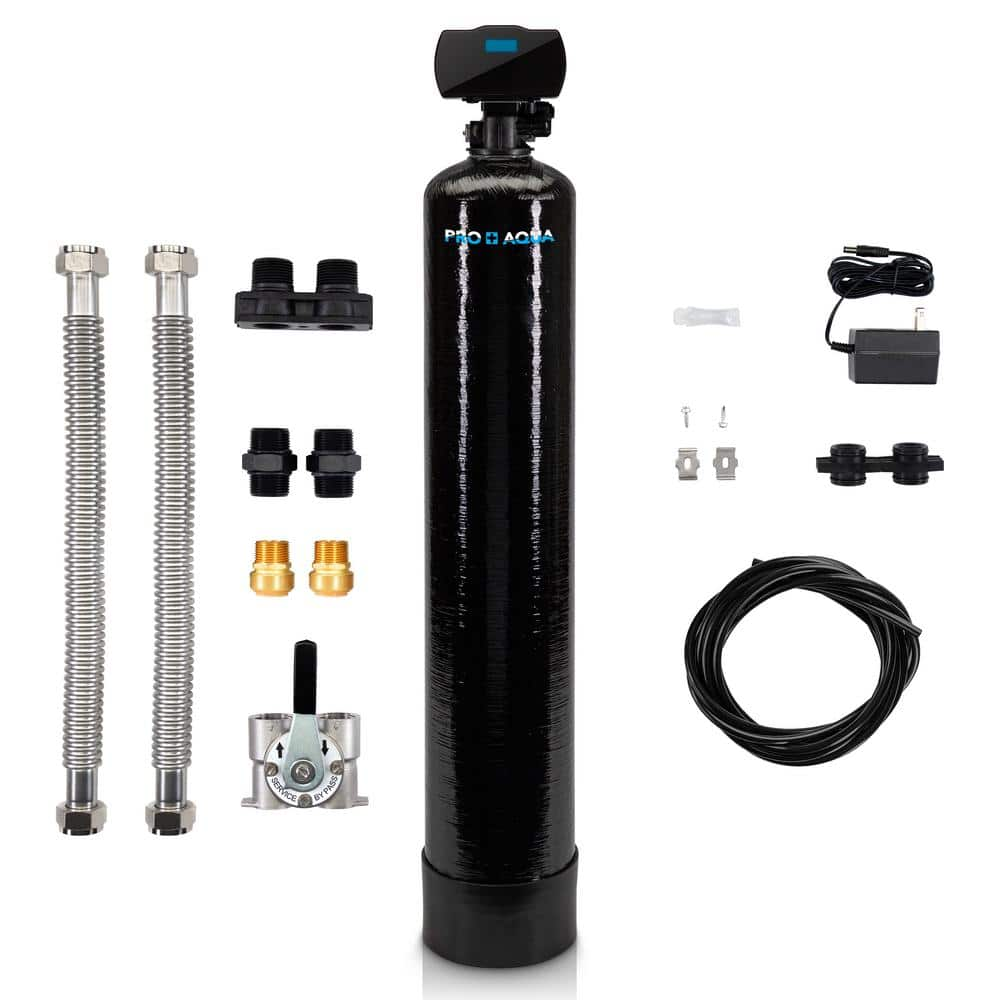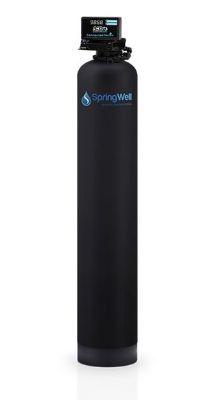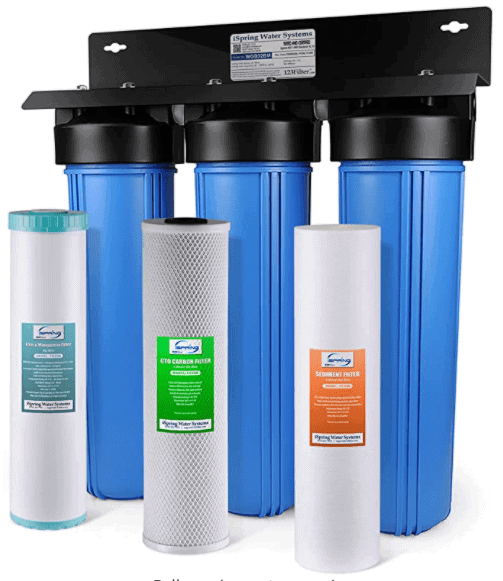If you’re searching for an affordable solution to filter your well water, look no further! In this article, you’ll discover the most cost-effective methods to ensure that your well water is clean and safe for consumption. Say goodbye to the hassle of expensive filtration systems and hello to efficient and budget-friendly options. Let’s explore the cheapest ways to filter well water and enjoy pure, refreshing water straight from your tap.
Types of Well Water Contaminants
Well water can be contaminated by various types of contaminants, which can pose a risk to your health and the quality of water in your home. The four main types of well water contaminants include microorganisms, heavy metals, chemicals, and sediment.
Microorganisms
One of the most common types of contaminants found in well water is microorganisms. These include bacteria, viruses, and parasites that can cause illnesses such as diarrhea, stomach cramps, and even more serious diseases like cholera. Microorganisms can enter your well water through various sources, including animal waste, septic systems, and agricultural runoff.
Heavy Metals
Heavy metals such as lead, arsenic, and mercury can also contaminate well water. These metals can enter the groundwater from natural sources, industrial pollution, and corroded pipes. Prolonged exposure to heavy metals can lead to serious health problems, including neurological disorders, kidney damage, and even cancer.
Chemicals
Well water can also be contaminated with various chemicals, including pesticides, herbicides, and industrial chemicals. These contaminants can seep into the groundwater through improper disposal, agricultural practices, and industrial activities. Long-term exposure to these chemicals can have adverse effects on your health, such as hormone disruption, reproductive issues, and increased risk of certain cancers.
Sediment
Sediment refers to particles, such as sand, silt, and clay, that can be present in well water. While sediment is not inherently harmful to your health, it can affect the taste, appearance, and overall quality of your water. Sediment can come from various sources, including soil erosion, construction, and natural deposits. It is important to remove sediment to ensure clean and clear drinking water.
Common Methods to Filter Well Water
Fortunately, there are several methods available to filter well water and remove these contaminants. The choice of method would depend on the specific contaminants present in your well water and your budget. Here are some common methods used to filter well water:
Boiling
Boiling is the simplest and most cost-effective method to purify well water. It is a traditional method that has been used for centuries to kill off harmful microorganisms. By bringing the water to a rolling boil for at least one minute, you can effectively kill most types of bacteria, viruses, and parasites that may be present in the water.
Reverse Osmosis
Reverse osmosis is a popular method for filtering well water, particularly for removing heavy metals, chemicals, and microorganisms. It involves forcing water through a membrane that traps contaminants while allowing clean water to pass through. Reverse osmosis systems typically consist of multiple stages of filtration, including sediment filters, carbon filters, and the reverse osmosis membrane itself.
Activated Carbon Filters
Activated carbon filters are effective at removing a wide range of contaminants, including chemicals, odors, and some heavy metals, from well water. These filters work by adsorption, where the contaminants stick to the surface of the carbon. Activated carbon filters are commonly used in combination with other filtration methods, such as reverse osmosis, to provide comprehensive water purification.
UV Sterilization
UV sterilization is a method that uses ultraviolet light to kill bacteria, viruses, and other microorganisms in well water. UV sterilization systems typically consist of a UV lamp that emits UV light as water flows through it. The UV light disrupts the DNA of microorganisms, rendering them unable to reproduce and causing them to die off. UV sterilization is a chemical-free method and does not require any chemicals to be added to the water.
Sediment Filtration
Sediment filtration is the process of removing particles and sediment from well water. This can be done through various methods, including using sediment filters, sand filters, or multimedia filters. Sediment filters work by trapping the particles as water passes through, leaving you with cleaner and clearer water.


This image is property of waterontop.com.
Boiling
Boiling is not only an effective method to kill microorganisms in well water but also one of the cheapest methods available. The process is simple – bring the water to a rolling boil for at least one minute, and then let it cool before drinking or using it for cooking. Boiling water destroys most types of bacteria, viruses, and parasites, ensuring that the water is safe to consume.
Cost
Boiling well water is incredibly cost-effective. All you need is a heat source, such as a stove or a campfire, and a pot to boil the water in. There are no additional costs involved, making it a budget-friendly option for water purification.
Effectiveness
Boiling is highly effective at killing off most types of microorganisms in well water. By bringing the water to a rolling boil for at least one minute, you can ensure that the water is free from harmful pathogens. However, it is important to note that boiling does not remove other types of contaminants, such as heavy metals or chemicals, from the water.
Advantages
One of the main advantages of boiling well water is its simplicity and accessibility. Almost everyone has access to a heat source and a pot, making this method readily available to most households. Additionally, boiling water does not require any additional equipment or ongoing maintenance.
Disadvantages
While boiling is an effective method to kill microorganisms, it does not remove other contaminants from the water. If your well water is contaminated with heavy metals, chemicals, or sediment, boiling alone may not be sufficient to ensure its safety. Furthermore, boiling well water can be time-consuming, especially if you need to boil large quantities of water for multiple uses.
Reverse Osmosis
Reverse osmosis is a widely-used filtration method for well water due to its effectiveness in removing various contaminants, including heavy metals, chemicals, and microorganisms.
Process
Reverse osmosis works by forcing well water through a semipermeable membrane, which acts as a barrier to trap contaminants while allowing clean water to pass through. Reverse osmosis systems often include multiple stages of filtration to ensure thorough purification. These stages can include sediment filters, carbon filters, and the reverse osmosis membrane itself.
Cost
The cost of a reverse osmosis system can vary depending on the brand, model, and features. However, it is generally more expensive than other filtration methods. The initial investment can be higher, especially for systems with additional features such as UV sterilization or remineralization. Additionally, there may be ongoing costs associated with replacing filters and membranes periodically.
Effectiveness
Reverse osmosis is highly effective at removing a wide range of contaminants from well water. The semipermeable membrane used in the process has tiny pores that can trap particles as small as ions, allowing only clean water to pass through. This makes reverse osmosis capable of removing heavy metals, chemicals, microorganisms, and even some dissolved solids from the water.
Advantages
One of the main advantages of reverse osmosis is its ability to remove a wide range of contaminants from well water. This makes it a comprehensive filtration method that can provide clean and safe drinking water for your household. Additionally, reverse osmosis systems are usually installed under the sink, saving space and allowing for easy access to purified water.
Disadvantages
One of the main drawbacks of reverse osmosis is its relatively high initial cost compared to other filtration methods. The installation of a reverse osmosis system can also be more complex and may require professional help. Additionally, reverse osmosis systems produce wastewater during the filtration process, which may need to be effectively managed.


This image is property of waterfilterguru.com.
Activated Carbon Filters
Activated carbon filters are commonly used in combination with other filtration methods, such as reverse osmosis, to provide comprehensive water purification.
Process
Activated carbon filters work through a process called adsorption, where contaminants in the water stick to the surface of the carbon. The activated carbon has a highly porous structure that provides a large surface area for the adsorption of contaminants. The filters typically contain a bed of activated carbon, which the water passes through, allowing the carbon to remove various impurities.
Cost
The cost of activated carbon filters depends on the size, brand, and type of filter you choose. Generally, they are more affordable compared to reverse osmosis systems. However, there may be ongoing costs associated with replacing the carbon filters periodically. The frequency of filter replacement can vary depending on the level of contamination in your well water.
Effectiveness
Activated carbon filters are effective at removing a wide range of contaminants from well water. They can remove chlorine, chloramines, volatile organic compounds (VOCs), and some heavy metals. Additionally, activated carbon filters help improve the taste and odor of well water, making it more pleasant to drink and use in cooking.
Advantages
One of the main advantages of activated carbon filters is their ability to remove a wide range of contaminants, including chemicals and odors. These filters are commonly used as part of a filtration system to complement other methods such as reverse osmosis. Activated carbon filters are also relatively easy to install and require minimal maintenance.
Disadvantages
Activated carbon filters have some limitations when it comes to removing certain contaminants from well water. They may not be as effective at removing heavy metals or microorganisms compared to other methods such as reverse osmosis or UV sterilization. Additionally, the effectiveness of activated carbon filters can decrease over time as the carbon becomes saturated with contaminants.
UV Sterilization
UV sterilization is a chemical-free method that uses ultraviolet light to kill bacteria, viruses, and other microorganisms in well water.
Process
UV sterilization systems typically consist of a UV lamp that emits UV light as water flows through it. The UV light disrupts the DNA of microorganisms, rendering them unable to reproduce and causing them to die off. UV sterilization is often used as a final step in the filtration process, complementing other methods such as sediment filtration or activated carbon filters.
Cost
The cost of UV sterilization systems can vary depending on the brand, model, and features. They are generally more affordable compared to reverse osmosis systems. The initial investment typically includes the cost of the UV sterilization unit and the necessary plumbing to incorporate it into your well water system. There may also be ongoing costs associated with replacing the UV lamp periodically.
Effectiveness
UV sterilization is extremely effective at killing bacteria, viruses, and other microorganisms in well water. It has been proven to be highly efficient in disinfecting water, eliminating more than 99.9% of harmful microorganisms. This makes UV sterilization a reliable method for providing safe drinking water for your household.
Advantages
One of the main advantages of UV sterilization is its ability to kill microorganisms without the use of chemicals. This means that your water remains free from added chemicals, ensuring a more natural taste. UV sterilization is also relatively easy to install and maintain, requiring periodic lamp replacement to maintain its effectiveness.
Disadvantages
UV sterilization is not effective at removing other types of contaminants from well water, such as heavy metals or chemicals. It primarily focuses on eliminating microorganisms that may be present in your water. If your well water is contaminated with other types of impurities, you may need to combine UV sterilization with other filtration methods to ensure comprehensive purification.


This image is property of images.thdstatic.com.
Sediment Filtration
Sediment filtration is the process of removing particles and sediment from well water to ensure clean and clear drinking water.
Process
Sediment filtration can be achieved through various methods, including using sediment filters, sand filters, or multimedia filters. These filters work by trapping and removing particles as water passes through them. Sediment filters typically have different micron ratings, which determine the size of particles they can remove. The smaller the micron rating, the finer the filtration and the more particles it can eliminate.
Cost
The cost of sediment filtration depends on the type and brand of filter you choose. Sediment filters are generally quite affordable compared to other methods of well water filtration. The initial investment includes the cost of the filter housing and the sediment filter cartridge. It is important to replace the filter cartridge regularly to maintain its effectiveness, resulting in ongoing costs.
Effectiveness
Sediment filtration is effective at removing various particles and sediment from well water, improving its overall quality. It can remove sand, silt, clay, and other particles, ensuring that the water is clean and clear. Sediment filtration does not typically remove dissolved impurities or microorganisms, so it is often used in combination with other filtration methods for comprehensive purification.
Advantages
One of the main advantages of sediment filtration is its ability to improve the clarity and appearance of well water. It helps remove particles that can make the water appear cloudy or dirty. Sediment filtration is also relatively easy to install and maintain, requiring periodic replacement of the filter cartridge to ensure optimal filtration.
Disadvantages
Sediment filtration alone may not be sufficient to address other types of contaminants, such as heavy metals, chemicals, or microorganisms, in well water. If your water is affected by these impurities, you may need to combine sediment filtration with other methods, such as reverse osmosis or UV sterilization, for a more comprehensive purification process.
Combining Methods for Cost-Effective Filtration
In some cases, combining multiple filtration methods can be a cost-effective approach to ensure thorough purification of well water. Here are two common approaches:
Sequential Filtration
One method is to use sequential filtration, where well water passes through multiple filters in a specific order. For example, the water may first pass through a sediment filter to remove larger particles, then through an activated carbon filter to remove chemicals and odors, and finally through a UV sterilization unit to kill microorganisms.
By using sequential filtration, you can target specific contaminants at each stage, ensuring that the water undergoes thorough purification. This approach can be more cost-effective compared to relying on a single filtration method to address all contaminants.
Use of DIY Filters
Another cost-effective approach is to use DIY filters in conjunction with commercial filtration methods. DIY filters can be made using readily available materials, such as activated carbon, sand, or gravel. These filters can help remove certain contaminants and prolong the lifespan of commercial filters, reducing the frequency of filter replacements.
While DIY filters may not be as efficient as commercial filters, they can still provide an additional layer of filtration and reduce the overall cost of maintaining a well water purification system.


This image is property of waterfilterguru.com.
Maintenance and Cost Considerations
When filtering well water, it is important to consider maintenance requirements and associated costs. Here are some key factors to keep in mind:
Filter Replacement
Most filtration systems require periodic filter replacements to maintain their effectiveness. The frequency of filter replacement can vary depending on the usage, water quality, and the specific filtration method used. It is important to factor in the cost and availability of replacement filters when considering a filtration system for your well water.
Energy Consumption
Certain filtration methods, such as reverse osmosis, may require electricity to operate. It is important to consider the energy consumption of the filtration system and its impact on your utility bills. Some systems, such as UV sterilization, have low energy requirements, making them more cost-effective in the long run.
Initial Investment
The initial investment for a well water filtration system can vary greatly depending on the method and brand chosen. It is important to consider your budget and the specific contaminants present in your water when selecting a filtration system. While some methods may have a higher upfront cost, they may offer better long-term savings by providing comprehensive purification.
Long-term Savings
While some filtration methods may have a higher initial investment, they may offer long-term savings by reducing the need for bottled water or expensive water treatment alternatives. Additionally, proper filtration can help extend the lifespan of plumbing fixtures and appliances, reducing maintenance and replacement costs in the long run.
Conclusion
Filtering well water is essential to ensure clean and safe drinking water for your household. Depending on the contaminants present in your water and your budget, there are various filtration methods available, including boiling, reverse osmosis, activated carbon filters, UV sterilization, and sediment filtration. Each method has its own advantages and disadvantages, and a combination of methods may be necessary for comprehensive purification.
When considering a filtration system, it is important to factor in the cost and effectiveness of the method, ongoing maintenance requirements, and potential long-term savings. By selecting the appropriate filtration method and maintaining it properly, you can enjoy clean and safe well water for all your household needs.


This image is property of waterontop.com.




